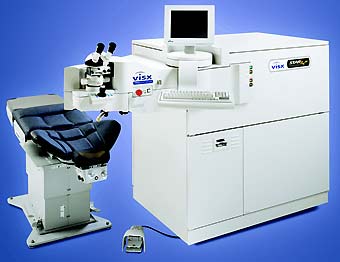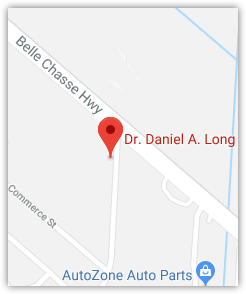 LASIK is the most advanced form of Laser Vision Correction. Not only is LASIK the most comfortable technique for correcting vision, it offers the quickest vision recovery. In fact, most LASIK patients return to work after only one day!
LASIK is the most advanced form of Laser Vision Correction. Not only is LASIK the most comfortable technique for correcting vision, it offers the quickest vision recovery. In fact, most LASIK patients return to work after only one day!
The doctors performing LASIK at the Caplan Eye Clinic are among the most experienced refractive surgeons in the U.S. For over 15 years, the Caplan Eye Clinic has been a leader in providing technologically advanced vision correction such as LASIK.
Custom Wavefront LASIK – Personalized LASIK
Custom LASIK (also called wavefront LASIK or wavefront-guided LASIK) is an advanced form of LASIK surgery that is capable of producing sharper vision than conventional, non-wavefront LASIK.
Higher-Order Aberrations
To understand the value of custom LASIK, it’s important to know that every eye is unique and that the human eye is not a perfect optical system.
 Nearsightedness, farsightedness and astigmatism are vision problems (or, more accurately, refractive errors) most patients recognize. But virtually every eye also has subtle optical errors called “higher-order aberrations.” Higher-order aberrations have less familiar, even strange, names like spherical aberration, coma and trefoil.
Nearsightedness, farsightedness and astigmatism are vision problems (or, more accurately, refractive errors) most patients recognize. But virtually every eye also has subtle optical errors called “higher-order aberrations.” Higher-order aberrations have less familiar, even strange, names like spherical aberration, coma and trefoil.
Though it’s estimated that higher-order aberrations typically account for no more than 10 percent of the total refractive error of an average eye, these subtle optical defects contribute to glare, halos, starbursts and other vision problems — especially in low-light situations, such as driving at night.
Wavefront Aberrometry: Detecting Higher-Order Aberrations
Higher-order aberrations (HOAs) cannot be detected by the tests performed in a traditional eye exam. Even if your eye doctor uses automated instruments to determine your eyeglasses prescription, it is likely these instruments only measure nearsightedness, farsightedness and astigmatism.
Detecting and measuring higher-order aberrations require advanced technology called wavefront analysis.
 A wavefront is a three-dimensional representation of the optical quality of a beam of light. If the optical quality of the light beam is “perfect” — that is, it has not been degraded by aberrations in an optical system (the eye, for example) — the wavefront is flat. When the light beam is distorted by optical aberrations, such as HOAs, the wavefront has a disrupted shape.
A wavefront is a three-dimensional representation of the optical quality of a beam of light. If the optical quality of the light beam is “perfect” — that is, it has not been degraded by aberrations in an optical system (the eye, for example) — the wavefront is flat. When the light beam is distorted by optical aberrations, such as HOAs, the wavefront has a disrupted shape.
Wavefronts of the human eye are measured by automated instruments called aberrometers. Wavefront aberrometers objectively measure the overall refractive power and refractive errors of the eye, including nearsightedness, farsightedness, astigmatism and a variety of higher-order aberrations. The aberrometer then displays a highly detailed, three-dimensional “map” of all the optical irregularities of the eye—including higher-order aberrations.
Custom LASIK is Wavefront-Guided LASIK

In custom LASIK, the data from the wavefront aberrometer is transferred to the computer on the excimer laser that reshapes the cornea. Rather than simply being programmed to correct nearsightedness, farsightedness and/or astigmatism (as in conventional LASIK) the excimer laser is programmed to deliver a much more complex ablation pattern in custom LASIK to reduce or eliminate higher-order aberrations as well as traditional refractive errors.
In other words, in custom LASIK, the excimer laser is wavefront-guided, not guided by just an eyeglasses prescription.
It is important to know that it’s virtually impossible to eliminate all higher-order aberrations of the eye with wavefront-guided LASIK. But studies have shown that because custom LASIK reduces pre-existing HOAs in the eye, wavefront LASIK typically produces a post-surgical eye that has fewer higher-order aberrations than eyes that have undergone conventional, non-wavefront LASIK. .
Make an Informed Decision
We want you to make an informed decision about LASIK. For more information, please attend one of our Free LASIK Consultations. For more information call us at 504-888-2600.

















